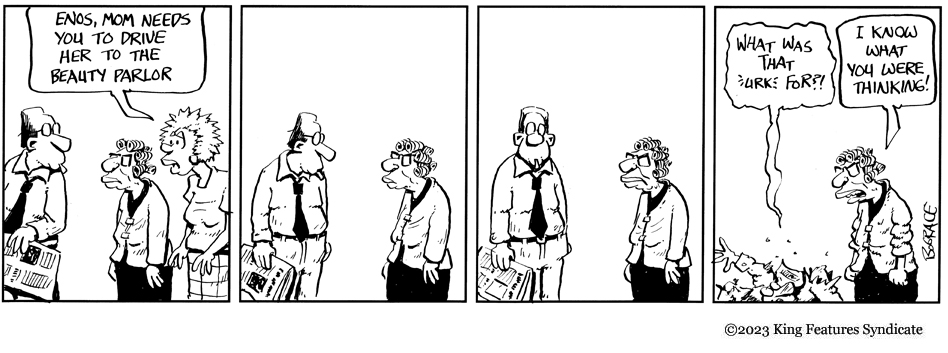Whew! I spent all morning out at the memory care singing for the old folks (of which I’m one). The good thing about that is they forget as soon as you’re finished.
And now the solution to yesterday’s question. “T” is the time it takes for the trains to meet. The train from Philly leaves 1/2 hour after the train from Cleveland:
Tp=Tc-1/2
The distance each travels is Dp or Dc.
Dc+Dp= 400 miles
Dc=400-Dp
The time it takes the train from Cleveland is:
Tc(h)=Dc(m)/60(m/h)
Dc=60Tc
The amount of time it takes the train from Philly is:
Tp= Dp/80
80Tp=Dp
Plug in stuff and you get:
Tc=400-Dc
Tc-400=Dc
So:
Dc=60(Dc=400)
And:
Tp=Tc-1/2
Tp=Dc/60
Now the train from Cleveland leaves at 8:00. So the time of day when the trains meet is:
T= 8:00+Tc
Which is the same as the time the Philly train gets there which is:
T=8:30 +Tp
So that:
Tp+Tc-*;00+
Shit.

![]()


The answer is that it does not matter as they both will be late. Don’t you know anything about railroads?
When I was a kid and they started tearing up the tracks, I knew it was a big mistake. The interstate system killed the railroads. In Europe they were much smarter. When I was a little kid my mother would take me on the train from Chester PA to Bridgeport CT to visit her sister’s family. Frau G and I have taken the Auto Train between Lorton Va And Sanford FL on several occasions. I hate to fly, and I’m too old to drive those long distances any more.
Yeah, and taking track and train maintenance (or lack thereof) into consideration, plus the current state of union/management negotiations, to say nothing of the economic viability of both train trips, or political or environmental opposition to those trains, who can say that they’d ever meet at all?
But making assumptions …
We don’t know how long it takes either train to get up to full speed, if “leaves” means starting from a dead stop at the station. But if “leaves X” means leaving the city boundaries and are fully up to speed at that point, that would work.
[If coming up to speed is instantaneous from a dead stop, why are we even talking about trains? That’s almost Star Trek transporter stuff. But trains are always the best way to travel, even inside my own house. But now we’re talking narrow gauge rail. Real narrow in some spots.]
But I digress …
The departure time difference is a trick to add confusion that can be overcome by setting aside the distance traveled by T(C) in those first 30 mins, which at 60MPH is 30 miles. That 30 minutes can be factored back in later.
So the total distance to have math-anxiety about is 400-30 or 370 miles.
The mental confusion over the speed difference can also easily be overcome by realizing that the math is the same if one train is actually stopped and the other is traveling at the total of both speeds, 60 MPH + 80 MPH, or 140 MPH, since that is the relative speed of each one toward the other (ignoring actual relativistic effects, another assumption, which is good since I was never good at calculus and differential equations).
Either way, the total distance covered by both trains in the remaining unknown time comes out the same.
So now we only need to know how long it takes for either train to cover 370 miles doing 140 MPH, while the other is stopped.
Without doing any real math, we can see by inspection that that is between 2-3 hours (280 miles in 2 hours, 420 miles in 3 hours). Since this super-fast train does 70 miles in a half hour, 2.5 hours is 350 miles (as a sanity-check figure).
The actual math is 370/140 hours, or 2.6428571429… hours (per my phone calculator), which passes the sanity-check (only for this problem, not for other aspects of my life).
The rest of the solution also requires a calculator, which hopefully is allowed. Surely, Effie knowing all, would have had one, and Bud left out the 5th panel where she remembers where she put it.
Since we now know that we have 2 hours, we only have to worry about minutes and seconds.
Minutes (via calculator) is 38.5714285714.
Seconds in that 38th minute is: 34.2857142857.
Although the question was “when will the two trains meet?”, rounding down that 34th second is probably close enough.
The sub-total is 2hrs, 38 minutes, 34 seconds.
Now, going back to the starting time of 8:00, and adding back in that set-aside first 30 minutes, the final “meet” time is 11:08:34 (3 hrs, 8 minutes, 34 seconds from 8:00).
Bud, we all know you really knew the answer, and you knew that we knew it as well. That’s why we are your fans.
Geeze!
Actually, I thought the answer would be a snap, but it took me waaaay too long to figure it out. At some point, it became a matter of ultimate choice: solve it or visit Madam Effie myself. (I could use a trip to NJ again. Are there any trains to Bayonne?)